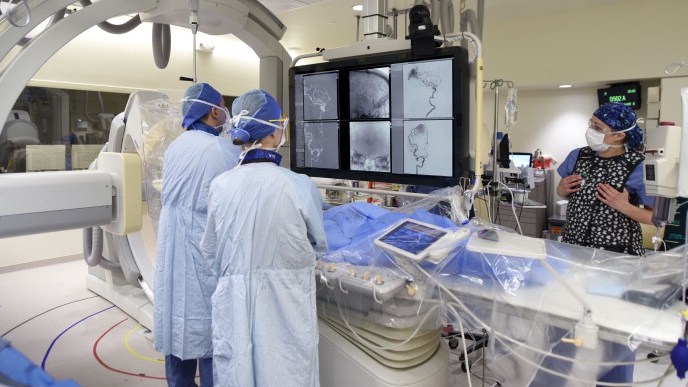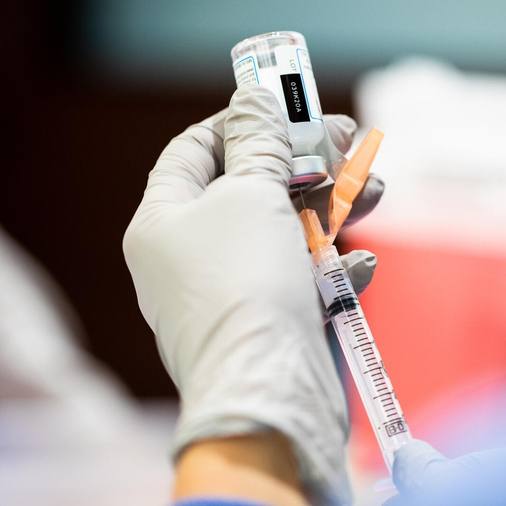
Undergoing neurosurgery poses particular risks during the pandemic. Here's how surgeons are making it safer — and what you can do.
__________________________________________
This article is written by Mayo Clinic Staff.
Despite COVID-19, neurosurgeries and other procedures are still happening in hospitals every day. Still, the idea of heading to the hospital for a neurosurgical procedure during a pandemic may trigger some questions and concerns for you.
Surgeons and hospital staff are taking precautions — additional sanitization, screenings and sometimes using different procedures — to keep themselves and you safe during neurosurgery.
Neurosurgery and COVID-19: What are the risks?
In some places, some nonemergency and nonurgent (elective) surgeries may be postponed for a time. This depends on the location and COVID-19 activity in the area. Postponing some procedures allows hospitals to create new guidelines for the pandemic. This can help save hospital resources and prevent the spread of COVID-19 infection.
But many neurosurgical procedures can't wait without risking serious health problems. For example, quickly growing tumors, severe head injuries, or conditions that put pressure on the brain or spinal cord can require prompt or emergency surgery.
The potential risks of neurosurgery are different than some other types of surgery because the virus is most heavily concentrated in the lungs, nose and back of the throat. This makes the risk of potential exposure to the virus a bit higher for surgeons and patients during neurosurgery around the head and face.
Certain tools often used during neurosurgery also increase the small particles of blood and respiratory droplets that are released when someone with the virus coughs, sneezes or speaks, which further increases the risk of transmitting COVID-19.
Fortunately, professional surgical organizations have identified these potential risks and ways to avoid or reduce them.
Managing risks at the hospital
Research shows that it's unlikely that the virus is widely spread through hospitals to patients or hospital staff. And no matter what type of surgery you're having, there are standard procedures to keep everyone safer in the hospital during the pandemic. These include:
- Increased sanitization and cleaning of hospitals, rooms, beds and equipment
- Required personal protective equipment (PPE) for hospital staff and patients
- Frequent COVID-19 testing and screening for symptoms such as fever and cough
- Improved ventilation in operating rooms
- Extra safety steps during procedures that increase potential exposure to the virus, such as placing or removing a breathing tube or procedures performed through the nose
Surgeons are taking more safety steps during the COVID-19 pandemic. Surgical staff can wear different levels of PPE during procedures.
They wear the highest levels of PPE when operating on someone who has or might have COVID-19. This protects surgeons and hospital staff, which also helps prevent the spread to other patients.
But even when operating on someone who has tested negative for COVID-19, surgeons still wear multiple layers of PPE as an added precaution.
Many hospitals have a separate area of the hospital, and sometimes dedicated staff, where patients with COVID-19 are treated. Operating rooms and other areas of the hospital also may have special ventilation to help prevent the spread of the COVID-19 virus through the air.
Before surgery, you'll be tested for COVID-19 — often more than once. Many hospital guidelines require two negative tests taken within 24 hours of the surgery. You may also have other tests to confirm that you don't have the virus, including a CT scan of your chest.
Alternative procedures to reduce risk
Neurosurgeons may opt for an alternative procedure when possible during the pandemic. Some surgeries are performed through the nose to reach an area of the brain. Surgeons might instead remove a section of skull to reach the brain. This helps reduce the risk of spreading COVID-19.
Surgeons may also avoid using certain tools that produce more aerosolized droplets, which may be suspended in the air and spread the COVID-19 virus.
Surgeons may also consider alternatives to traditional surgery, such as stereotactic radiosurgery (SRS). This noninvasive procedure is often used to treat tumors. It doesn't require general anesthesia or an incision.
SRS can be a safer alternative to traditional surgery during the pandemic because traditional surgery:
- Uses more hospital supplies and PPE
- Requires more hospital staff, beds and rooms
- Requires placing a tube in the throat to help you breathe during the procedure (intubation), which increases the risk of spreading COVID-19
SRS may be used for some neurological conditions, such as arteriovenous malformation, and certain types of tumors. SRS doesn't require a hospital stay. This also helps to reduce the risk of COVID-19 spread and the use of hospital beds, supplies and staff.
How you can protect yourself
Talk to your surgeon about the risks of your particular surgery. Ask what you can do to stay healthy and recover well, and if there are any specific concerns or precautions you should take.
Before and after your surgery, you should take these steps to reduce your risk of COVID-19 infection:
- Avoid contact with people who are ill.
- Wear a cloth face mask when you leave the house or spend time with someone who doesn't live with you.
- Consider wearing eye goggles when you leave the house or spend time with someone who doesn't live with you.
- Don't touch your face.
- Practice social distancing from others.
- Wash your hands frequently with soap and water.
- Ask your surgeon what precautions will be taken during your surgery and your hospital stay.
- Limit the number of visitors you have at home, and understand that the hospital may limit or even not allow visitors during your stay.
Information in this post was accurate at the time of its posting. Due to the fluid nature of the COVID-19 pandemic, scientific understanding, along with guidelines and recommendations, may have changed since the original publication date.
Check the Centers for Disease Control and Prevention website for additional updates on COVID-19. For more information and all your COVID-19 coverage, go to the Mayo Clinic News Network and mayoclinic.org.







